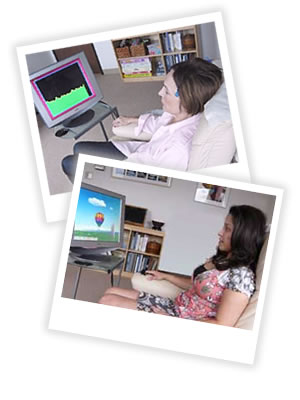 Cognitive-Behavioral Therapy
Cognitive-Behavioral Therapy
Cognitive-Behavioral Therapy is based on the idea that by controlling our thoughts and behaviors, we can change our emotions and physiology. If we can learn to recognize, for example, our exaggerated or irrational thoughts that trigger anxiety and depression or exacerbate our irritable mood and, then, learn to substitute more realistic and rational thoughts, our mood will automatically improve. Similarly, when we engage in new, healthier behaviors such as practicing a breathing exercise, using effective communication skills with friends, family and co-workers, work out at the gym, learn to enjoy a new hobby or tap into a previously suppressed passion, we will automatically enjoy a more stable and emotionally satisfying life. In other words, we can change the ways we think and behave so that we will feel much better, whether or not the external situation changes.
| • Depression | • Self-Esteem Issues |
| • Anxiety | • Grief & Loss |
| • Life Transitions | • Addiction & Recovery |
| • Job Stress | • Codependency/Adult Children of Alcoholics |
| • Relationships |
 Biofeedback
Biofeedback
Biofeedback is a learning process that combines relaxation training with the use of instruments that measure mind/body processes of which the individual is not normally aware and that can be brought under voluntary control. Everyone uses “feedback” when they look in a mirror reflecting an uneven shave or unmatched clothing. The reflected information allows for a cleaner shave or a change of clothing so that now “you feel just right.” With biofeedback, information about the body such as breathing patterns, heart rate and rhythms, muscle tension, sweat gland activity and other measures are seen and heard through colorful graphs, video games and musical tones. The physical measures also reflect emotional states and can help transform anxiety or worry into calm. The goal of training is to gain control over the mind and body simultaneously and to achieve optimal relaxation, greater health, harmony and balance in one’s life.
| • Chronic stress | • TMJ & Jaw Pain |
| • Anxiety, Panic Attacks & Phobias | • Hypertension |
| • Addiction & Recovery | • Raynaud’s Disease |
| • Obesity | • Tinnitus |
| • Insomnia | • Irritable Bowel Syndrome (IBS) |
| • Chronic Pain | • Muscle Spasm |
| • Tension and Migraine Headaches | • Asthma |
 EMDR (Eye Movement Desensitization
EMDR (Eye Movement Desensitization
and Reprocessing)
EMDR is a cutting edge therapy which was originally developed to treat trauma and is currently being used to treat a wide variety of clinical issues such as depression, anxiety, panic and phobia, grief, self-esteem and relationship difficulties. It is based on the idea that when a person is very upset, their brain cannot process information as it does ordinarily. A moment becomes “frozen in time,” and remembering a trauma can feel as bad as going through it the first time because the images, sounds, smells and feelings haven’t changed. EMDR seems to have a direct effect on the way the brain functions. Normal information processing is resumed so that following successful EMDR therapy, the images, sounds and feelings no longer are re-lived when the event is brought to mind. What happened is still remembered but it is significantly less upsetting. Negative beliefs about oneself are transformed into positive and empowering ones.
• Post-Traumatic Stress Disorder
• Recovery from Childhood Trauma/Abuse
• Phobias & Panic Attacks
• Mood Disorders